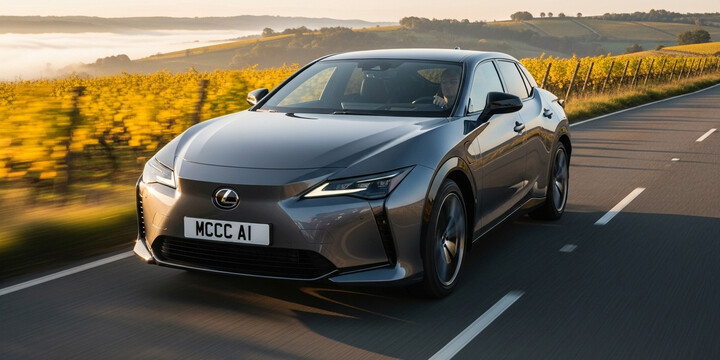
LEXUS RZ (2022-)
The LEXUS RZ (2022-) is a stylish and innovative electric SUV that has quickly become a popular choice in the UK's growing electric vehicle market. Designed with a sleek and modern aesthetic, the RZ combines Lexus’s renowned comfort and luxury with eco-friendly technology, making it ideal for families, commuters, and those seeking a premium yet environmentally conscious vehicle. Its spacious interior and advanced features make it well-suited for daily use, long journeys, or town driving.
What sets the LEXUS RZ (2022-) apart is its focus on refined driving experience, reliability, and high-quality design, making it a compelling option in the competitive electric SUV segment. Known for impressive build quality and smooth handling, the RZ offers a quiet, comfortable ride with excellent fuel economy—particularly enticing for eco-conscious drivers. Compared to rivals, it stands out with Lexus’s signature blend of luxury and practicality. Whether you're considering a used model or just exploring your options, the LEXUS RZ (2022-) is worth noting for its innovative features, low previous ownership, and strong reputation in the electric vehicle market.

average use

The latest mileage data for the 2022 Lexus RZ indicates that an overwhelming majority of vehicles, approximately 97.7%, have recorded mileage between 0 and 10,000 miles. Conversely, very few vehicles fall into higher mileage brackets, with only 1.2% between 10,000 and 20,000 miles, and an even smaller percentage (0.6%) each for the 60,000-70,000 and 80,000-90,000-mile ranges. This suggests that most Lexus RZs from 2022 are relatively new and have been driven only a short distance, consistent with their recent model year.

vehicle values

The private sale valuation data for the Lexus RZ (2022-) reveals a gradual increase in percentage difference as the mileage rises, particularly notable beyond the 50,000-mile mark where discounts reach around 5.8%. Most price segments show modest reductions of around 0.6% to 3.5%, indicating relatively stable values for lower mileages, especially under 40,000 miles. Interestingly, the percentage discounts tend to be slightly higher than average at higher mileages (above 60,000 miles), reflecting increased depreciation. Overall, the data suggests that mileage significantly impacts resale value, with substantial drops noticeable after 50,000 miles, while lower mileage vehicles tend to maintain closer to their original value percentages in private sales.

production years

The data indicates that a majority of Lexus RZ vehicles are manufactured in 2024, accounting for approximately 56.1% of the sample. Vehicles from 2023 make up around 35.3%, while a small portion, about 8.7%, are from 2025. This distribution suggests that most of these vehicles are very recent, with a significant portion being from the upcoming year, likely representing pre-production or early arrivals in the UK market.

colour popularity

The data on the main paint colours for Lexus RZ (2022-) vehicles indicates that black is the most common choice, comprising approximately 17.9% of the sample. Following closely are blue (16.8%) and white (14.5%). Notably, grey and bronze also have significant shares at 12.1% and 11%, respectively. Less prevalent colours include grey/black and multi-colour, each making up around 4-6.4%. Overall, the palette suggests a preference for classic, neutral, and darker shades among owners, with black, blue, and white being the most popular choices.

ownership cycle

Based on the data for Lexus RZ vehicles from 2022 onwards, the majority of vehicles (89.6%) are registered to a single keeper. A small proportion (7.5%) has had two registered keepers, while 2.9% of vehicles have an unspecified number of keepers. This suggests that most Lexus RZs tend to be owned by individuals or entities who retain ownership for some time, with relatively few changes in ownership frequency.

engine choices

The data indicates that all Lexus RZ models from 2022 onwards are exclusively powered by electricity, with no information available about their engine capacity. This suggests that the vehicle line is fully electric, reflecting a move towards greener and more sustainable mobility solutions. The absence of engine capacity data likely stems from the electric nature of these vehicles, where traditional engine metrics are less relevant.












